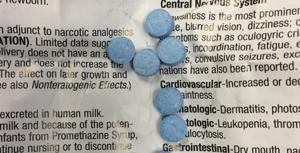The Yakima Valley has grappled with an escalating crisis of drug overdoses in recent years, a challenge that has necessitated innovative approaches to public health and safety. The relentless surge in lethal substance abuse, particularly involving potent opioids, has placed immense pressure on local emergency services and healthcare providers, underscoring the urgent need for effective intervention strategies to protect the community.
A stark illustration of this crisis is the alarming increase in fentanyl-related fatalities. In 2017, fentanyl was responsible for a tragic nine of the county’s 44 drug-related deaths. By the close of last year, this synthetic opioid had become the primary cause in 99 of the 146 recorded fatal overdoses, marking a devastating rise that has profoundly impacted families and communities across the region. This escalating death toll highlighted a critical gap in rapid response and intelligence gathering.
Amidst this grim reality, a promising solution has emerged: a sophisticated overdose tracking program designed to provide real-time data on drug incidents. This initiative represents a proactive shift in addressing the epidemic, moving beyond reactive measures to implement a data-driven strategy aimed at early detection and prevention. The program’s implementation signals a new era in the fight against drug abuse in the local area.
The mechanics of this program, known as ODMAP, are straightforward yet highly effective. Participating agencies, including emergency responders and law enforcement, meticulously log crucial details of every overdose incident. This includes the date, time, precise location, the outcome for the individual involved, and whether Narcan—a life-saving opioid overdose reversal medication—was administered. Crucially, the identities of those affected are maintained with strict anonymity, ensuring privacy while gathering vital public health intelligence.
These comprehensive data points are instrumental in enabling emergency workers to create detailed maps of overdose hotspots, identify the specific types of drugs involved in incidents, and assess their severity. Such insights facilitate significantly faster response times, allowing medical personnel to reach individuals in critical condition more quickly. Furthermore, this granular data empowers health officials to develop and deploy more targeted and effective prevention measures tailored to specific communities or demographic groups.
Beyond immediate emergency response and prevention, the intelligence gathered by ODMAP offers a significant advantage to law enforcement. By pinpointing clusters of overdoses and understanding the patterns of drug use, authorities can more effectively track and disrupt the supply chains of deadly illicit drugs. This collaborative approach between public health and law enforcement is proving essential in dismantling the networks responsible for distributing dangerous substances within the community.
While ODMAP is not presented as a definitive panacea for the complex drug crisis, its utility as a powerful tool in the ongoing battle to save lives is undeniable. The ability to collect and analyze real-time data provides an invaluable edge, allowing for more informed decisions and strategic deployments of resources. The investment in such a system is proving to be incredibly worthwhile, given its capacity to reduce fatalities and mitigate the broader societal impact of drug abuse.
Early indicators from the program are highly encouraging. As of mid-year, the number of fentanyl-related deaths has seen a notable decline, with 21 local fatalities attributed to the opioid, compared to higher figures in previous years. The overall total of 55 overdose deaths also represents a decrease from the 68 fatalities recorded by the same point in the prior year. These initial statistics underscore the program’s significant potential and reinforce optimism for its long-term impact on public health and safety in the region.






Leave a Reply